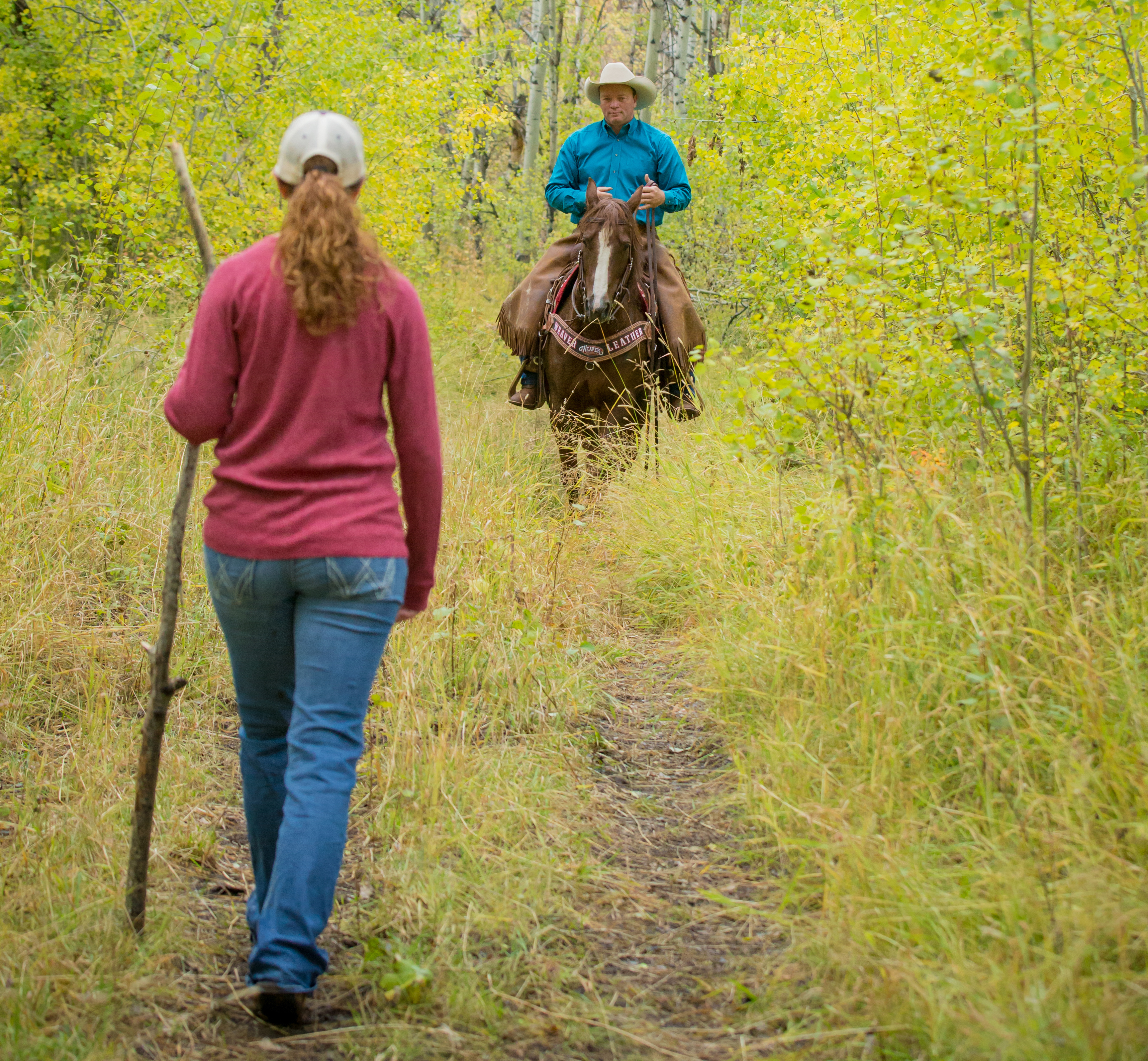Public lands and trails provide an opportunity to explore the most beautiful scenery in the country. Like horseback riders, outdoor enthusiasts from hikers to cyclists take pleasure in getting away from the city to enjoy the backcountry. Maintained public trails and even some wilderness areas that are open to horsemen are also frequented by hikers, cyclists, and motorcyclists; it’s important to know and practice the rules of the trail to ensure that all users have a positive, stress-free experience.
Horses are large and intimidating to many non-riders and, because of their weight, can cause trail damage. Be sensitive to this reality, acting as a steward of the trail, and you’ll gain respect from your fellow users. Being courteous increases the likelihood that public resources will remain open and available to you and other riders in the future. Learn to be a good trail co-user by following these simple commandments of trail etiquette.
Thou shalt obey signs. Signs at the trailhead of marked public parks indicate the types of users allowed. These restrictions exist for a reason: for safety, because of terrain suitability, or a trail traffic-related issue. If you see that horses aren’t permitted on a particular route and ignore the signs, you do other riders a disservice. If you leave manure or tear up the trail, the area can become completely off-limits to riders.
Thou shalt pass with care.If you’re moving faster than a group ahead of you—whether on a horse, a bike, or afoot—slow to the group’s pace. Avoid crowding and tailgating, which makes the other riders feel anxious and not enjoy their ride. When they pull off to the side, pass politely and thank them. If the person or group ahead doesn’t think to step out of the way to let you by, that’s OK. Bide your time until the trail widens and you can get around them.

Mallory Beinborn
Thou shalt obey the slow lane. Be aware of riders, cyclists, or hikers approaching from behind. As soon as you see a safe place to pull off to the side, do so to let them pass. Approaching motorized vehicles can spook your horse. If they come up behind you, pull off as soon as possible to let your horse face and watch the vehicle or bike go by. Hopefully the riders are courteous enough not to approach so quickly that it puts you in a bad position. If this does happen, speed up and get out of the way for your own safety.
Thou shalt yield. Whether you’re on foot or horseback, the rules of the trail give preference to the person descending. Coming down the terrain is often more difficult to navigate because of rocks, loose dirt, and the decline. Help others feel safe and comfortable by pulling off to the side when you see someone making their way down the trail.
Thou shalt clean up after thyself. You don’t want to see where a biker’s changed their tire or a backpacker’s had their lunch, and others don’t want to come across evidence of your horse. If you rest to have lunch or stay overnight, clean up after yourself. Spread manure and pick up dropped hay so hikers, cyclists, and motorists don’t have to trek through it. Load your saddlebags with cans, wrappers, and other trash you accumulate or find. Even orange and banana peels, though biodegradable, take a long time to break down, so pick these up, too.
Thou shalt mind nature. Care for trails by staying on marked pathways. Deviation from groomed routes can erode the landscape, making it more difficult to manage and potentially damaging to nearby fauna.
When you stop for lunch or stay overnight, use highlines and tree savers to protect the area. A tree saver is anything that protects bark and keeps your highline from cinching down against the tree. Rubber tubing, pool noodles, extra cinches, and store-bought protectors are all suitable. Hobbles also keep horses from wandering and potentially damaging trees, brush, flowers, and other nature.
Thou shalt flex horsepower. Maintaining the resources of the trail is up to public services, such as the BLM or park services. Preserving the trail is in our hands. The more we do to help, the longer we’ll have the privilege to take advantage of natural public resources. Carry a saw on every trail ride, so you can contribute your horse’s skill and horsepower to clean up. When you come across downed timber, cut it back with enough room for everyone to get by. Discard it away from the path so it’s not dangerous or an eye sore.

Thou shalt prepare your horse. Approaching motorized vehicles and cyclists, with their bright colors and high speeds, often spook horses. Prepare your horse for these factors just as you would other conditions, such as wildlife and boggy ground. Ride a four-wheeler, Kubota, or dirt bike around during non-feeding times to get your horse used to the noise and speed. Have your kids ride bikes around your horse. Do all you can to prepare your mount for the trail.
Thou shalt respect other users. Horses are large animals. It’s important to be sensitive that many people aren’t as comfortable with horses as you are. Give people plenty of room and pass with care so they feel safe and that their space is respected.
If you’ve experienced angry responses from hikers or cyclists in the past, it’s likely that they lashed out because they felt anxious or scared. Be an ambassador for other trail riders by being friendly and empathetic to people’s needs. This translates to a positive experience for you and other hikers, cyclists, and motorists.
Thou shalt be involved. Use of public land is a privilege, not a right. To keep this opportunity available, stay informed about policies that impact trail availability, land conservation, and environmental maintenance funding. Protect the resources by joining trail conservation groups.






